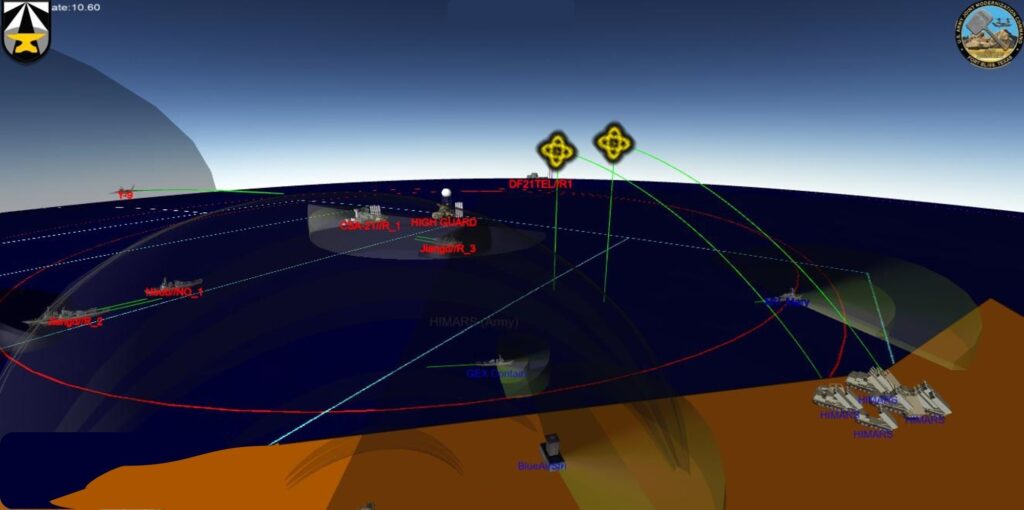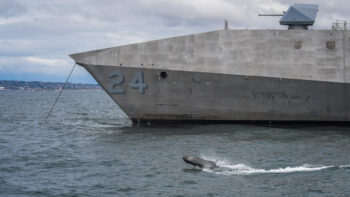
JADC2, Joint Modernization Command image
WASHINGTON: The Joint Staff has revised the Pentagon’s strategy for Joint All Domain Command and Control (JADC2). Now Deputy Secretary Kathleen Hicks has to decide if it’s good enough.
Also, the Joint Staff is making progress on an implementation plan for the new strategy, as well as on a JADC2 reference architecture for sharing data across the services and combatant commands, Army Brig. Gen. Rob Parker, deputy director of the Joint Staff’s J-6 directorate, said today.
Defense Secretary Lloyd Austin’s approval for the JADC2 strategy had been expected earlier this month, according to public comments by Parker’s boss at the J-6 directorate for command, control, communications, & computers/cyber, Marine Lt. Gen. Dennis Crall. But either Hicks, Joint Chiefs Chairman Gen. Mark Milley — or both — sent it back to the Joint Staff for changes. Now that Milley has approved the revised version.
“We worked hard on our strategy; there’s been a lot of questions about ‘where’s that strategy?’” Parker said at an AFCEA event today. “I’m happy to report that it has moved through the the chairman; we have his full support. It’s up with Dr. Hicks right now, and we anticipate it moving on for signature by the Secretary of Defense here very shortly… probably in a few weeks.”
The strategy itself doesn’t contain the detailed instructions for how to move forward. Those will come in the implementation plan, a draft of which will now be circulated for comment. “That’s a very detailed document, [with] very clear objectives, tasks, plans of action, and milestones,” Parker said. “It’s starting staffing this week across the department.”
Meanwhile, the armed services are working on key components of the Joint Warfighting Concept, which describes how the services will fight together with seamless coordination across land, sea, air, space, and cyberspace. The Air Force has the lead for JADC2, the Navy has joint fires, the Army contested logistics. Later this month, the Joint Requirements Oversight Council, chaired by Joint Chiefs Vice Chairman Gen. John Hyten, will issue “strategic directives” to the services on how to approach their pieces of the puzzle – a more proactive approach than the JROC has taken in the past. These include “data decrees” that will help share data across the services, Parker said.
[Click here to read more on the JROC’s new assertiveness]
But the Joint Staff is not seeking to impose one data-sharing standard on all the services, Parker emphasized.
“[On] common data standards, we’re trying to find the right balance there, [because] there was a lot of pushback,” Parker said today. “So we’re looking for a minimum required when necessary and really continue to focus on federated [standards].”
“We will have a mission partner federated data fabric out there,” he said, “[but] we acknowledge the services, combatant commands, other agencies are going to have their own fabrics that we need to be able to connect with and interoperate with.”
In layman’s terms: The Defense Department will let its subordinate organizations develop their own data standards, but they’ll need to be compatible enough that the Joint Staff can then knit them together (“federate” them”).
To help solve this daunting problem, the Joint Staff is also developing a JADC2 reference architecture that will describe how the services connect systems and networks, and how the data will move amongst them. This has been extensively revised and refined already, Parker said; much more development remains to be done.
“We’ve worked hard on our reference architecture for JADC2,” he said. “We’re on version two right now; it’s getting ready to go to the JROC for endorsement.”
“Version two’s admittedly better than version one, but still leaves a lot to be desired,” Parker said frankly. “Version Three, coming out later this summer, will be a much more specific document that’s going to be very well coordinated.”
The current version is heavily informed by collaboration between the Joint Staff , Pentagon Chief Data Officer David Spirk, all the armed services, and the Combatant Commanders, Parker said. “We got a lot of feedback from Combatant Commands and services, [saying] ‘hey, we don’t want to just talk about the data, we need to really see how we think it’s going to move across this envisioned data fabric.”
“We’ve had lots of stakeholder input to this date, but we have two more key data events in June and July,” Parker said. “They’re going to take place at STRATCOM and down at SOCOM [to] really help us refine these products…. making sure our terminology, our concepts are sound before we move forward and identify those requirements.”
Theresa Hitchens contributed to this story.






















